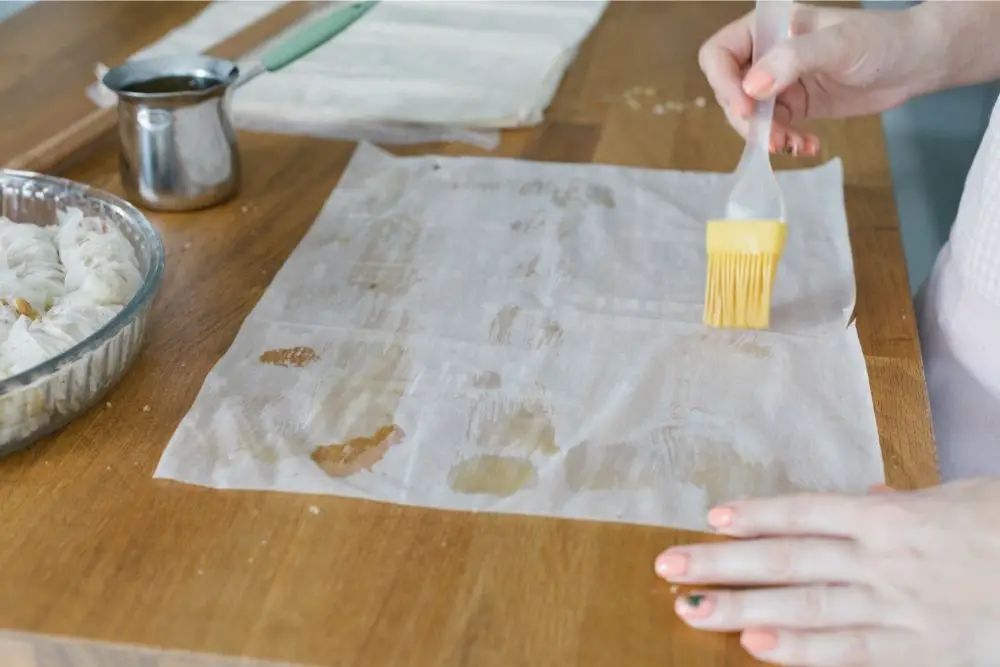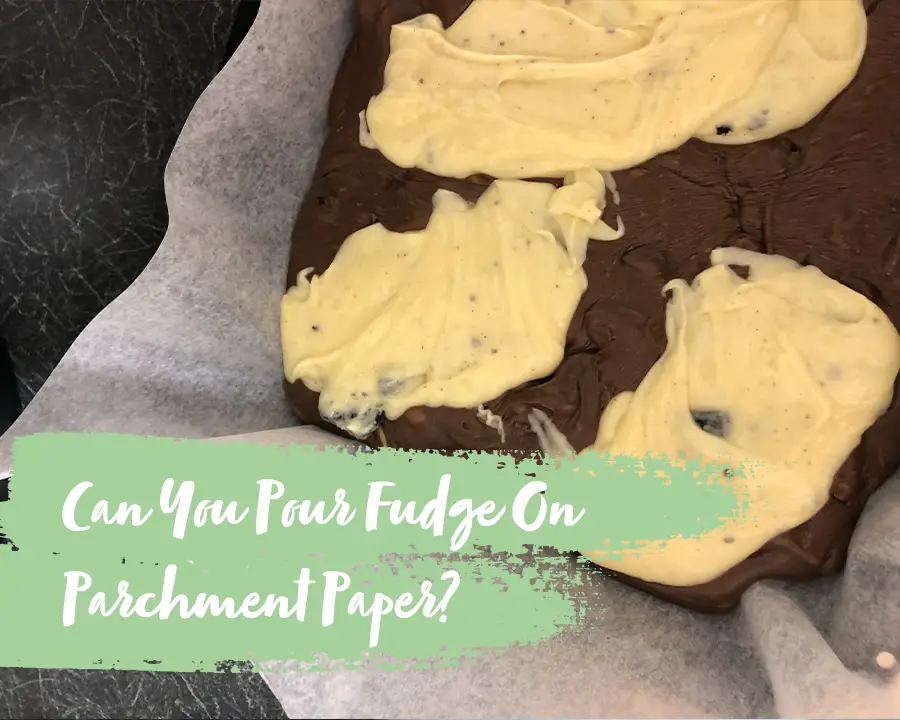Learning how to prepare,cook and store fudge correctly unlocks a whole new world of wonder for you – not to mention a delicious, mouth-watering sweet treat that is guaranteed to ensure that you are a hit at parties for years to come!
You can pour fudge onto parchment paper to ensure that your fudge doesn’t stick to pan. You can use parchment paper, waxed paper and foil. In this article we’ve listed fudge safe ways to line your baking trays.

Getting your fudge to turn out perfectly can be a challenge, however, and there are a number of elements to consider – including whether or not you can pour your fudge onto parchment paper.
Still confused? Then read on for everything you need to know!
How To Ensure That Your Fudge Is Delicious
Making great fudge is easier said than done, but by following a few simple steps, you can maximize your chances of a delicious sweet treat in no time,
Choose Your Tools
The first stage of creating the perfect fudge is to choose the right pan – this should be made from a heat-conductive material, such as aluminum or copper, and should have a flat bottom to allow heat to be distributed evenly.
Straight sides and a heavy, thick bottom are also preferable – this helps the fudge to cook more evenly, and also makes it easier for you to take an accurate temperature.
You also need to ensure that the pan you choose is the right size for the amount of fudge that you are planning to make.
Prepare Your Pan
Once you have chosen the perfect pan, you need to make sure that you line it properly – this makes it easier to clean after you are done, and means that you will be able to remove your fudge easily once it is cooked.
You can use a piece of foil or parchment paper to line your pan and shape this to fit the outside of your pan to start with.
Then, fit the piece of foil inside your pan, pressing it into the edges, and add a little butter to the bottom and each side of your foil – this reduces the risk of the fudge sticking to the side of the pan.
Cook Your Fudge To Soft-Ball Stage
Once your pan is lined, add your ingredients (usually chocolate, evaporated milk butter, and sugar), and cook them all together over a medium to high heat until the mixture is boiling.
Once the mixture reaches boiling point, add a clip-on thermometer to the side of your pan, ensuring that the bulb is totally immersed in liquid but not touching the bottom of the pan for an accurate reading.
Continue to cook the fudge, stirring with a wooden spoon until it reaches the “soft-ball” stage – this is usually between 234°F to 238°F.
As an alternative, you can use cold water to see whether your fudge is at the “soft-ball” stage. Wait until just before the fudge has reached the minimum cooking time, and then add a few drops of your mixture into a cup of iced water.
Use your fingers to mold the drops into a small ball, and remove the ball from your water. If, when you remove the ball, it immediately becomes flat and runs in between your fingers, you will know that your mixture is at the ideal temperature.
Cool Your Fudge
Once your fudge has reached the required temperature, remove it from the heat, and allow it to cool to 110°F. Once you have reached 100°F, you need to beat the mixture continuously and vigorously until it starts to stiffen.
At this point, you can add any extra ingredients, including nuts or chocolate chips if desired. Then, continue to beat the fudge until it becomes thick, and starts to lose its glossy sheen.
At this point, it is time to move on to the next stage.
Pour The Fudge Into A Pan
Once the fudge has been beaten, you can pour it into the pan and spread it around to coat the bottom of the pan evenly.
Remember, you will need to use parchment paper or foil to line the pan, and prevent the fudge from sticking.
Simply pour the mixture from the pan into the desired container – resist the urge to scrape, as scrapings tend to have a stiffer and less pleasant texture.
Cool And Cut
Once your fudge is poured and cool, wait until it is firm, and then use the parchment paper or foil to remove the fudge from the pan. Then, remove the parchment paper, and use cookie cutters or a knife to shape your fudge into your desired shape.
Safe Storage
Once you have cooked and cooled your fudge, you need to make sure that you are storing it properly to allow it to remain fresh. Fudge tends to have a slightly moist consistency, and so needs to be stored in an airtight container, in clear plastic wrap, in waxed paper, in foil, or in parchment paper.
What Is The Best Storage Option For Fudge?
Storing your fudge correctly is another important part of ensuring that you achieve the best possible results, and there are a number of popular options. The most common options include:
- Parchment
- Wax paper
- Freezer paper
- Foil
While all have their own pros and cons, the only way to decide which is best is to force them to go head to head, until one option emerges victorious.
Wax Paper Or Parchment?
Both parchment paper and waxed paper are coated paper, but the nature of their coating is slightly different. As the name suggests, wax paper is coated in paraffin or soybean wax, while parchment paper is coated in silicone, and comes either bleached or unbleached.
The different coatings of the papers mean that they are ideal for different uses – wax paper is best for lining work surfaces, tables, and countertops – for example if you are concerned about mess.
Wax paper is also great for wrapping food when it is cold and is great for placing between layers of fudge if you are planning to freeze it – this prevents it from sticking together.
Parchment paper, on the other hand, is ideal for hot items. It contains a silicone coating, and this makes it non-stick and resistant to heat. This makes parchment paper great for lining your pots and baking pans to stop fudge sticking to the bottom.
Foil Or Parchment Paper?
As we mentioned earlier, you can use foil or parchment paper for lining your pans and reducing the chance that your fudge will stick to the bottom.
Silver foil is essentially super-thin aluminum, and while it can be useful for lining dishes and pans, but it is important to note that it has no non-stick properties of its own – you will need to add butter or oil, and you run the risk of ending up with foil in your fudge.
Parchment paper, on the other hand, is naturally non-stick, and so is a great option for helping to reduce the risk of your fudge sticking to the bottom of the pan.
Final Thoughts
If you are wondering whether it is ok to pour your fudge onto parchment paper, then the answer is not only a resounding yes but a reminder that this is a great way to ensure that your fudge looks and tastes it’s very best.

